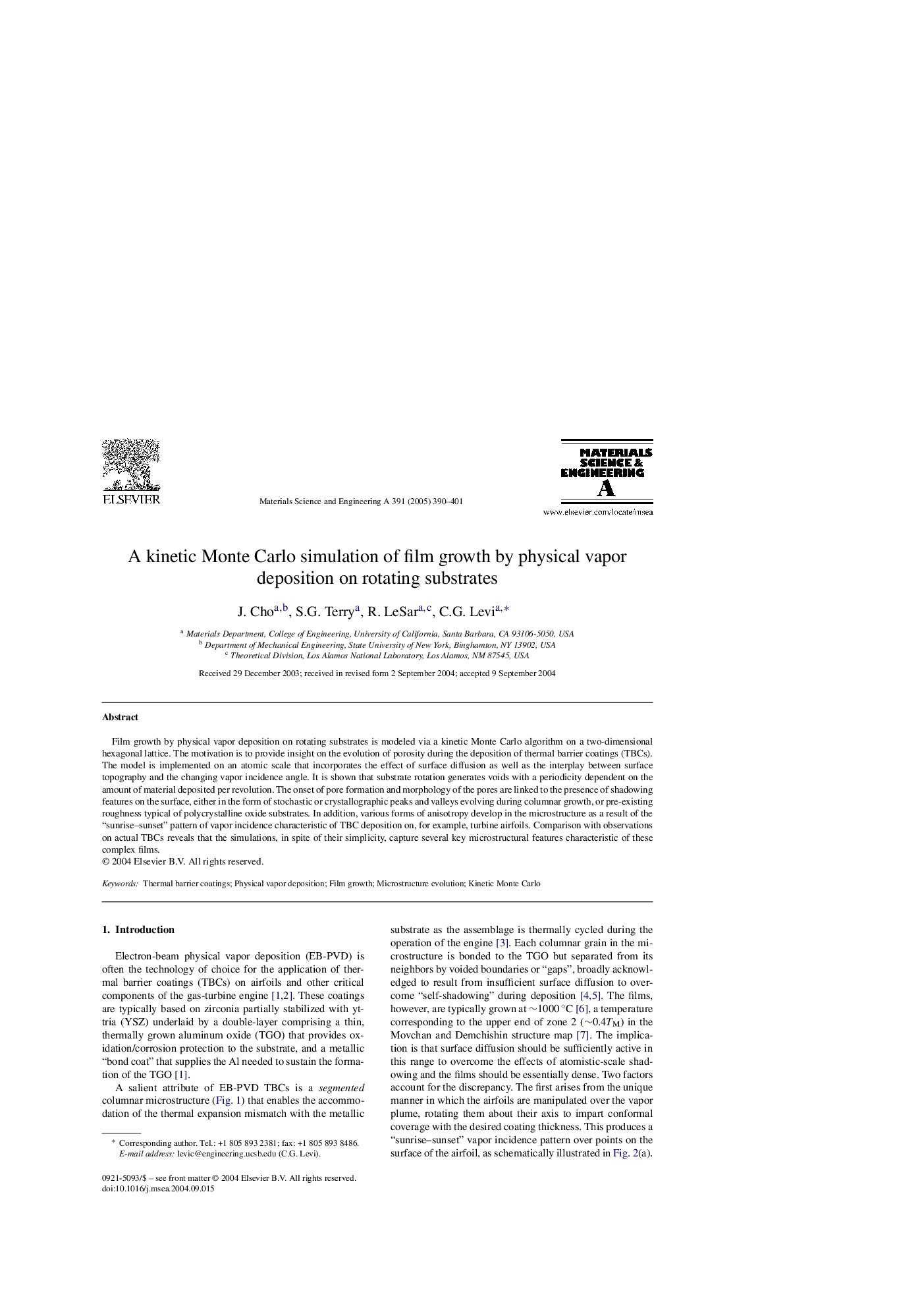| Article ID | Journal | Published Year | Pages | File Type |
|---|---|---|---|---|
| 9796639 | Materials Science and Engineering: A | 2005 | 12 Pages |
Abstract
Film growth by physical vapor deposition on rotating substrates is modeled via a kinetic Monte Carlo algorithm on a two-dimensional hexagonal lattice. The motivation is to provide insight on the evolution of porosity during the deposition of thermal barrier coatings (TBCs). The model is implemented on an atomic scale that incorporates the effect of surface diffusion as well as the interplay between surface topography and the changing vapor incidence angle. It is shown that substrate rotation generates voids with a periodicity dependent on the amount of material deposited per revolution. The onset of pore formation and morphology of the pores are linked to the presence of shadowing features on the surface, either in the form of stochastic or crystallographic peaks and valleys evolving during columnar growth, or pre-existing roughness typical of polycrystalline oxide substrates. In addition, various forms of anisotropy develop in the microstructure as a result of the “sunrise-sunset” pattern of vapor incidence characteristic of TBC deposition on, for example, turbine airfoils. Comparison with observations on actual TBCs reveals that the simulations, in spite of their simplicity, capture several key microstructural features characteristic of these complex films.
Keywords
Related Topics
Physical Sciences and Engineering
Materials Science
Materials Science (General)
Authors
J. Cho, S.G. Terry, R. LeSar, C.G. Levi,
